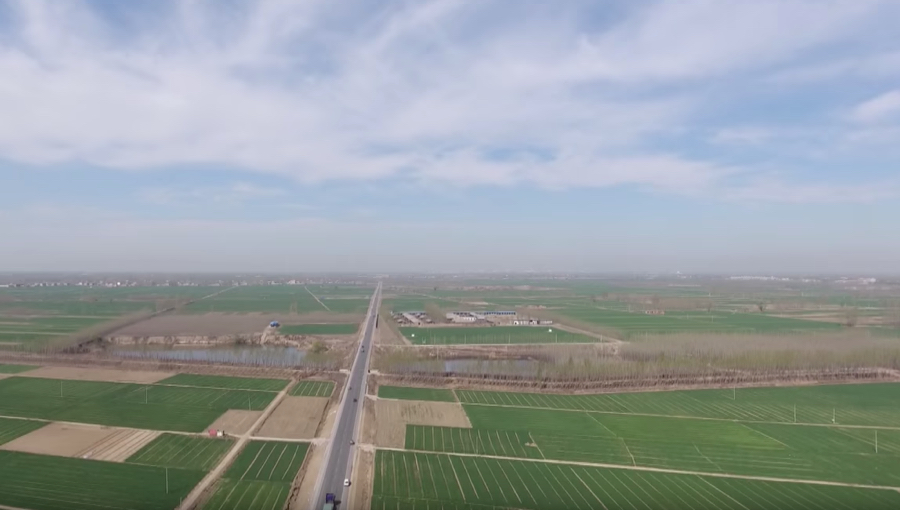China’s building a mega city from scratch – it’s going to suck in lots of steel, copper

While Beijing’s One Belt, One Road initiative is much grander in scale, the controversial infrastructure program to create a Eurasian trading route is already running into trouble.
In contrast, the success of Chinese President Xi Jinping’s other grand project is almost a certainty.
On April 1, Xi announced a state-level plan to transform a backwater called Xiongan, located 110km south of Beijing and near the port city of Tianjin, into a hub for technology and innovation by building a city that will eventually cover 2,000 square kilometres or nearly three times the size of New York.
Under the current plans, living space and commercial floor space per capita will be larger than Beijing
Xiongan New Area is designed to relieve the pressure on Beijing which is being choked by overcrowding, pollution and traffic congestion. The central government will relocate many state-owned companies and institutions including universities to Xiongan. By linking the new city to Tainjin authorities hope it will become an engine of growth to rival Shenzen (the first Special Economic Zone created in 1980) in the Pearl River delta, as well as Shanghai and the Yangtze River delta megalopolis.
A new study from Wood Mackenzie tries to estimate the impact of the investment in Xiongan (up to $580 billion over 20 years according to some estimates) on metals markets:
Initially, Xiongan will need to significantly upgrade its infrastructure. This will be almost equivalent to building an entire new city given the area’s current poor infrastructure. The relocation of industries and people to Xiongan will create demand for both residential, commercial and industrial buildings. It is worth noting that, under the current plans, living space and commercial floor space per capita will be larger than Beijing.
This additional demand for space will spur greater demand for home appliances, such as air-conditioners. Wood Mackenzie believes the immediate impact of this increase in demand could be seen within one-three years, although the first stage of Xiongan’s development will take at least 10 years.
Wood Mackenzie’s base case scenario envisages the development of Xiongan tracking that of Binhai, a SEZ established in 2005 which today has over 3m inhabitants and GDP in 2015 of $135 billion:
If Xiongan can achieve the same level of development as Binhai, we estimate the new area will add around 20 Mt of steel demand, 400 kt of aluminium demand and 250 kt of copper demand during the first 10 years. Binhai reached its construction peak around 2012, seven years after it was established. If this is repeated with Xiongan, the peak year is likely to be between 2020 and 2025.
If Xiongan rivals Shenzen (2015 population 11m, GDP $254 billion) in terms of demand for resources, something the authors believe is unlikely, the additional demand increases to 30 Mt of steel demand, 660 kt of aluminium, and 400 kt of copper over the next 10 years.

More News
{{ commodity.name }}
{{ post.title }}
{{ post.date }}




3 Comments
Angelo Torrisi
Good news for iron ore just have to sit tight for 5 years. Start accumulating in 4
SnakePlissken
Not bad enough to destroy the world’s best and dwindling farm lands for moronic population explosion, now we do that in countries that have stabilized their populations. Progress.
Richard Schodde
Its a good story for metal consumption in Xiongan – but the journalist has made the classic mistake of “missing the forest for the trees” when it comes to its impact on China’s overall metal demand. All this mega-project does is relieve / divert the need to build housing/offices/infrastructure elsewhere in the country.
The key driver for metals demand in China is the rate of urbanisation. Net migration from the countryside to the cities actually peaked at 20 million people pa in 2012. Research by McKinsey indicates that the future rate of urban growth will halve to ~10 million pa by 2030. Sure, lots of these people could end up in the new city of Xiongan, but the NET effect at national level on overall metal demand will be much more subdued. China will continue to consume more metal – but not as much as much as the article suggests.
Although it is slightly off-topic, McKinsey predict that, over the same time period the rate of urbanisation in India will double to 20 million people per annum. What that means is that (from a metals producer’s perspective) what’s happening in India will actually be more important to our future.